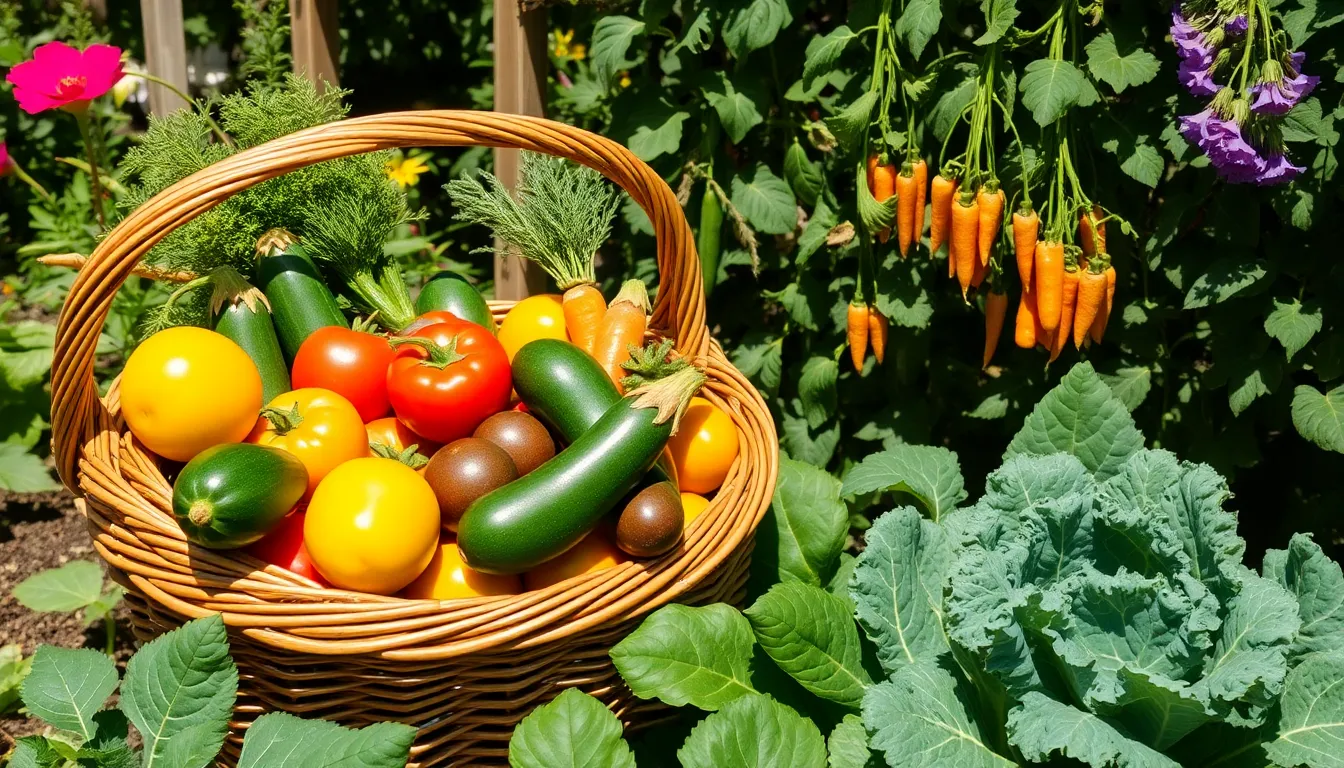The joy of harvesting your own vegetables is a deeply gratifying experience, one that connects you directly to the rhythms of nature and the fruits of your labor. Whether you’re just planting your first seeds or you’re a seasoned gardener with years of soil under your fingernails, the benefits of growing and harvesting your own produce are both profound and plentiful.
For beginners, the allure of harvesting lies in the tangible rewards that come after weeks of nurturing and patience—imagine plucking a ripe tomato from the vine, its warmth still lingering from the sun. Experienced gardeners, on the other hand, can appreciate the deeper sense of accomplishment that comes with knowing exactly where their food comes from and how it was grown.
In this article, we will explore the myriad benefits that come with harvesting your own vegetables—from enhancing your health and well-being to fostering a more sustainable lifestyle. You’ll discover practical insights and tips that will make your gardening journey not only rewarding but also significantly impactful in ways you might not have previously considered.
Nutritional Advantages of Fresh Produce
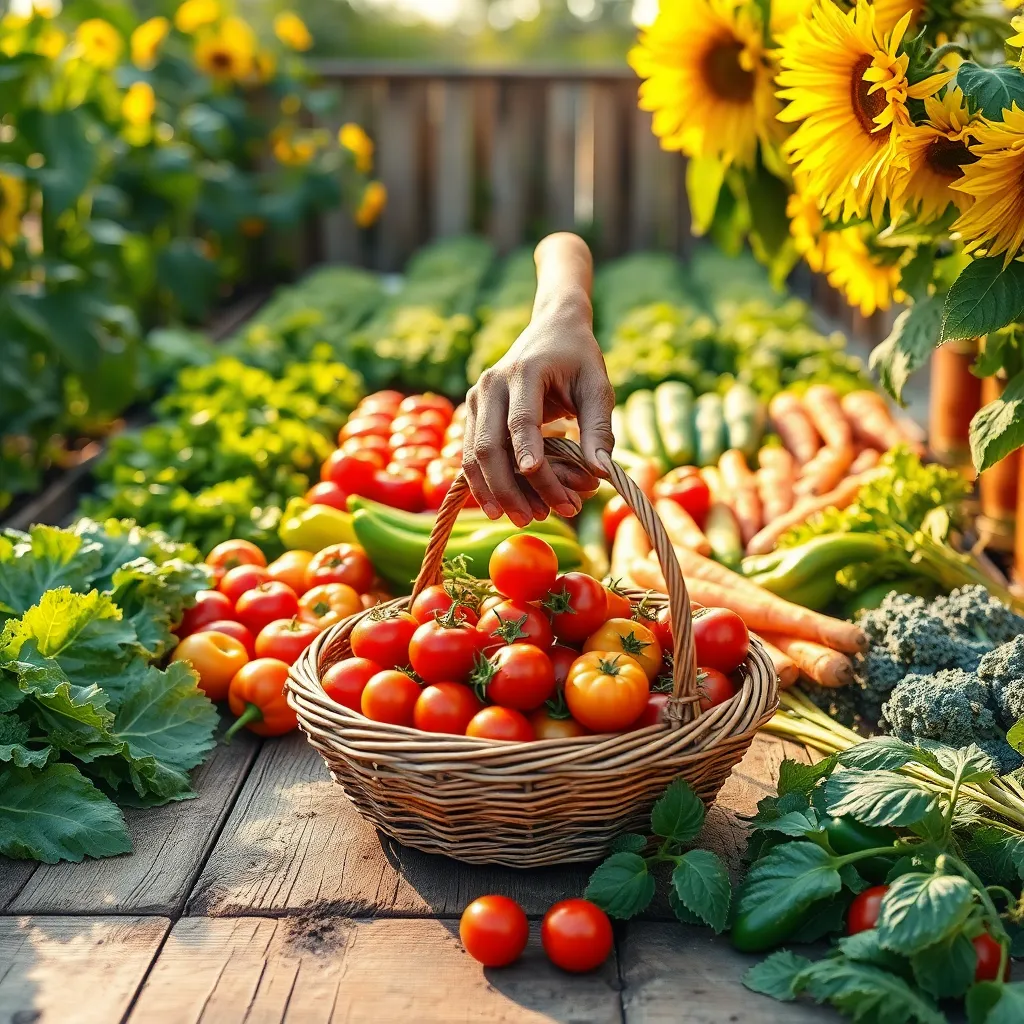
Growing your own vegetables not only ensures a fresh supply but also maximizes the nutritional benefits. Freshly harvested produce retains more vitamins and minerals compared to store-bought items that lose nutrients during transport and storage.
Consider starting with easy-to-grow vegetables like leafy greens, which are packed with nutrients. These plants thrive in well-drained soil and require consistent watering to maintain their lush foliage.
Tomatoes are another excellent choice for gardeners looking to boost their vitamin intake. To achieve the best results, plant them in a sunny location and use a trellis to support their growth, ensuring they receive adequate airflow and sunlight.
For those with a bit more experience, try growing root vegetables like carrots and beets, which are rich in antioxidants and fiber. Ensure the soil is loose and sandy for easy root expansion, and keep it evenly moist to prevent splitting.
Savoring Seasonal Flavor Profiles
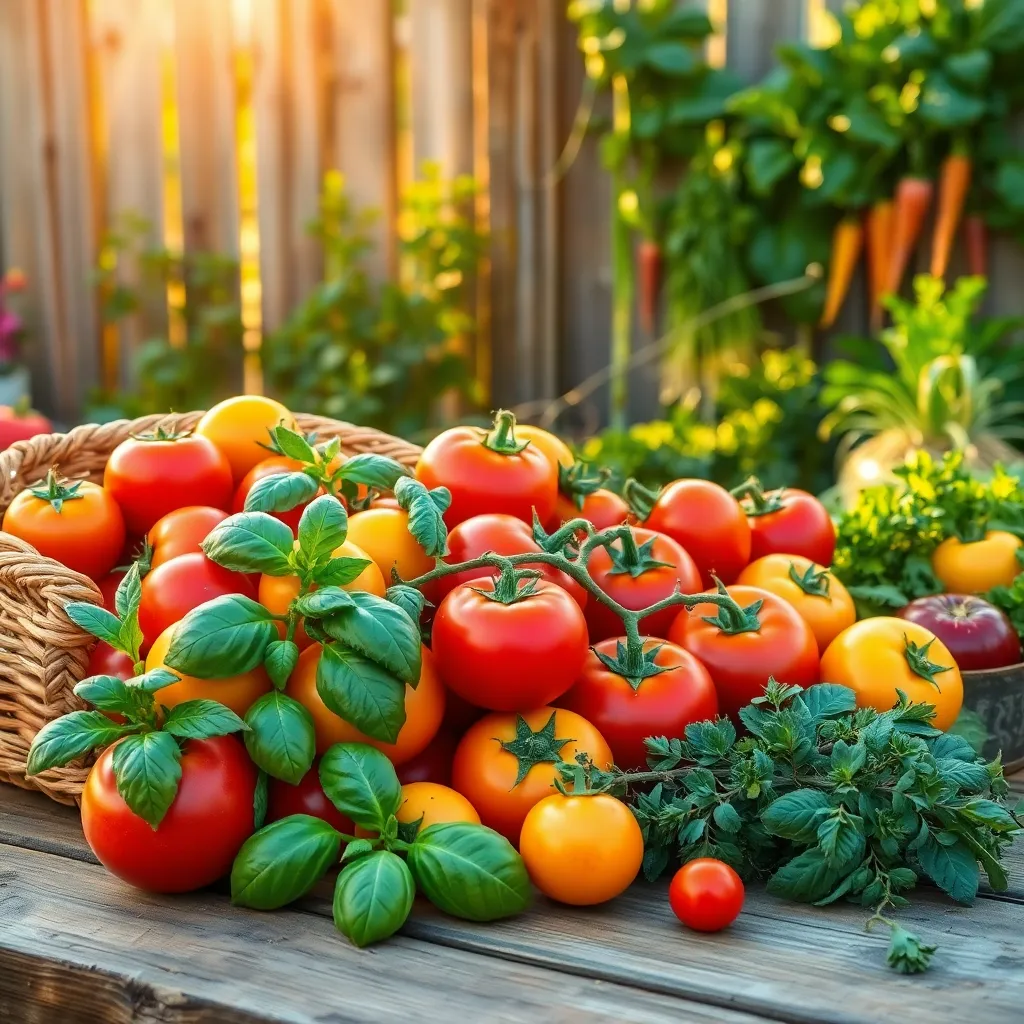
Embracing the distinct flavors of seasonal vegetables can transform your culinary experiences and elevate your gardening game. Growing vegetables in their prime season ensures they develop the most robust flavors, which can be a reward for the palate.
To maximize these flavors, focus on planting in the right seasons with optimal conditions. For instance, root vegetables like carrots and beets develop their sweetest, most intense flavors when grown in cool, fall temperatures.
Ensuring your soil is rich in organic matter is crucial for flavor development. Use a mix of compost and well-rotted manure to create a nutrient-dense environment, which enhances the natural sweetness and depth of your vegetables.
Regular watering is essential, especially during dry spells, but avoid overwatering as it can dilute flavor. Aim for consistent moisture levels by applying a thick layer of mulch, such as straw or wood chips, which helps retain soil moisture and regulate temperature.
- Beginner Tip: Start with easy-to-grow seasonal favorites like lettuce and radishes, which require minimal effort and offer quick gratification.
- Advanced Tip: Experiment with companion planting; basil can enhance the flavor of tomatoes when grown nearby, offering both culinary and gardening benefits.
Timing your harvest is another key factor in savoring the best flavors. Picking vegetables early in the morning, when they retain the most moisture and nutrients, can significantly enhance their taste.
Reducing Grocery Costs Effectively
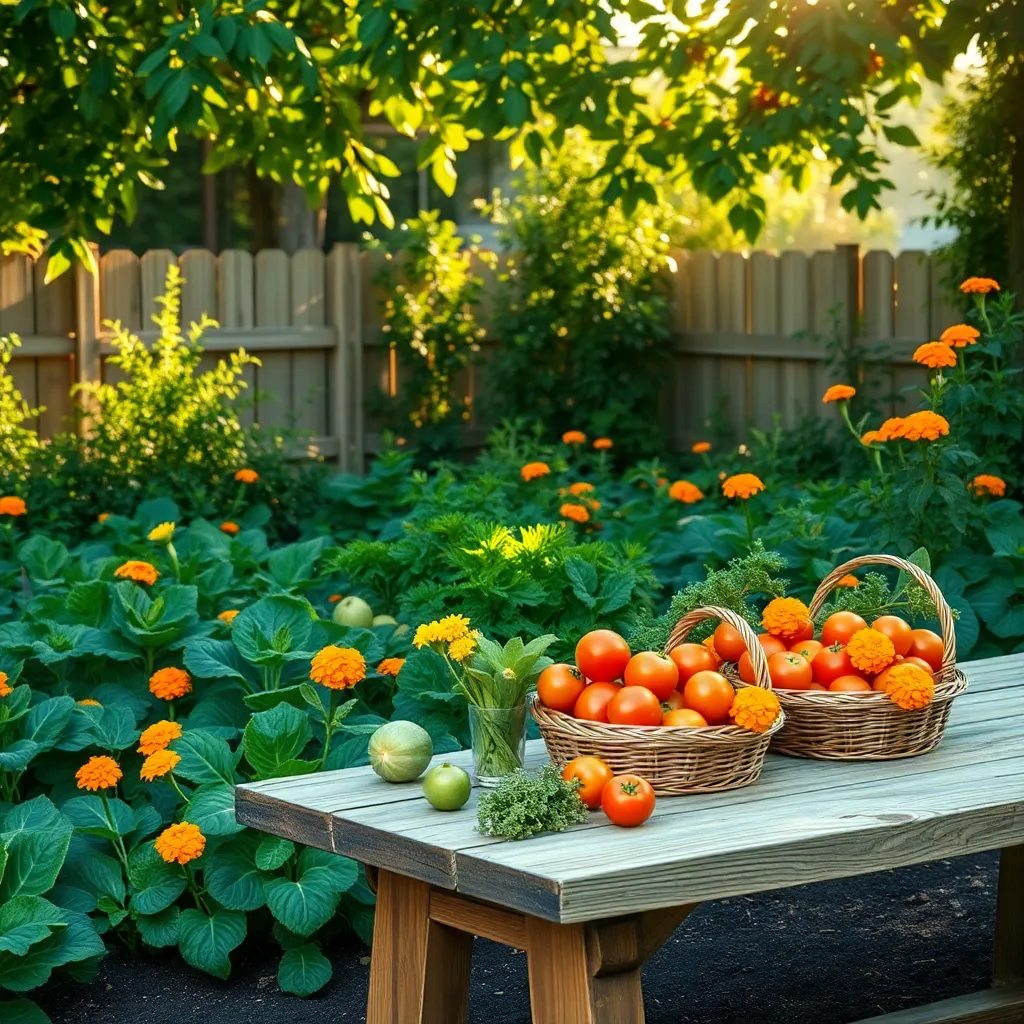
Growing your own vegetables can significantly cut down on grocery bills while providing fresh produce at your fingertips. Start with easy-to-grow varieties such as tomatoes, lettuce, and radishes, which thrive in most climates and can be grown in small spaces.
To maximize your savings, consider using a succession planting technique, which allows you to plant different crops in the same space throughout the growing season. This method ensures a continuous harvest, reducing the need to purchase vegetables from the store.
Invest in quality soil and compost to enhance the productivity of your garden, as nutrient-rich soil leads to healthier plants and greater yields. For those with limited space, container gardening is a viable option, allowing you to grow a variety of vegetables on patios or balconies.
Regular watering is crucial for vegetable gardens, especially during dry spells; aim for about one inch of water per week, delivered either by rain or irrigation. Mulching around plants helps retain moisture and suppress weeds, ensuring your crops have less competition for nutrients.
Promoting Sustainable Living Practices

Embracing sustainable living practices through gardening can significantly reduce your environmental footprint. By growing your own vegetables, you minimize reliance on commercially farmed produce, which often involves significant carbon emissions due to transportation and packaging.
Start by selecting plants that thrive in your local climate, which often require fewer resources and less maintenance. Vegetables such as tomatoes, peppers, and lettuce are excellent choices for many regions and can be grown in containers or small plots, making them accessible for gardeners of all skill levels.
To enhance sustainability, focus on enriching your soil naturally with compost made from kitchen scraps and yard waste. This practice not only reduces the need for chemical fertilizers but also improves soil health, leading to more robust plant growth.
Water conservation is another key aspect of sustainable gardening. Implementing drip irrigation systems or using rain barrels for watering can dramatically cut water usage while ensuring your plants receive the moisture they need.
Consider companion planting as a strategy to naturally deter pests and enhance vegetable yields. For example, planting basil alongside tomatoes can help repel insects, while marigolds can serve as a natural deterrent for nematodes, promoting a healthier garden ecosystem.
Enhancing Mental and Physical Health
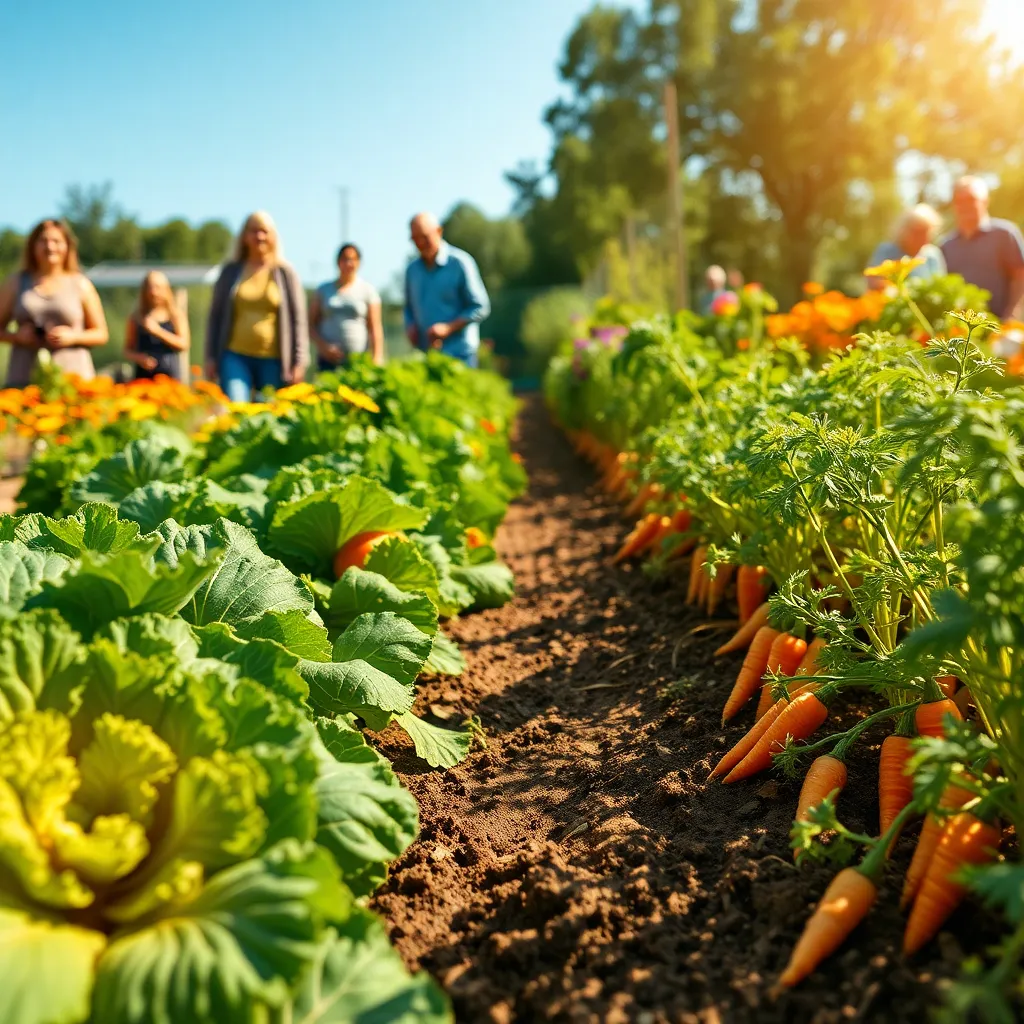
Integrating vegetable gardening into your routine can significantly enhance mental and physical health. Engaging with the soil and nurturing plants creates a sense of accomplishment and reduces stress levels, acting as a natural mood booster.
For beginners, starting with easy-to-grow vegetables like lettuce, radishes, or carrots can be extremely rewarding. These plants thrive in well-drained soil and require consistent but moderate watering, making them perfect for those new to gardening.
Experienced gardeners might consider experimenting with crop rotation to maintain soil health and prevent pest buildup. By rotating crops like tomatoes and beans, you not only improve soil fertility but also encourage biodiversity within your garden.
Regular physical activity involved in gardening, such as planting, weeding, and harvesting, can improve cardiovascular health and strengthen muscles. To maximize these benefits, aim to spend at least 30 minutes in the garden a few times a week.
Advanced gardeners can try implementing companion planting to optimize growth conditions. Pairing plants such as basil with tomatoes can enhance flavors and deter pests, contributing to a healthier and more productive garden.
Incorporating mindfulness techniques while gardening, like focusing on the sensory experiences of touch and smell, can elevate the mental health benefits. This practice encourages gardeners to be present in the moment, fostering a deeper connection with nature.
Conclusion: Growing Success with These Plants
In exploring the ‘Benefits Of Harvest Vegetables’, we unearthed five key relationship concepts: nurturing growth through shared activities, fostering communication by working together, strengthening bonds through mutual achievements, enhancing health and well-being as a team, and cultivating gratitude for shared experiences. Each concept highlights how simple acts, like harvesting vegetables, can deeply enrich your relationship by nurturing understanding, unity, and joy.
As an actionable step, why not plan a visit to a local farm or start a small garden together? This hands-on experience can be a delightful way to apply these concepts, offering you a fresh perspective on collaboration and connection.
Remember, relationships, much like gardens, thrive with attentive care and intention. Bookmark or save this article to revisit these insights and strategies as you continue your journey toward a more fulfilling partnership. By integrating these practices into your daily life, you’re not only investing in the health of your relationship today but also sowing the seeds for a flourishing future together. Empower yourselves with these tools and watch as your relationship blossoms with every shared endeavor.

